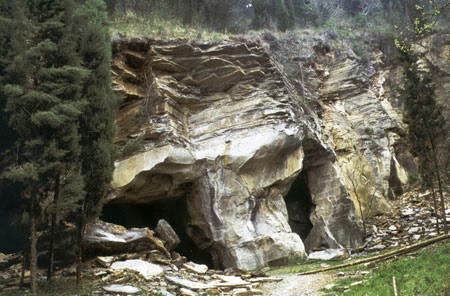 |
| Time Passing |
A blog to explore the interests of an original renaissance woman; arts, sciences, poetry, librarianship and everything in between.
Showing posts with label Courtauld Institute. Show all posts
Showing posts with label Courtauld Institute. Show all posts
Tuesday, 22 April 2014
Death, Romance and the Landscape
Thursday, 6 March 2014
The Language Of Sculpture: Bernini Canova Rodin
Finally we reach specific sculptors and a review of three in chronological order. Given that we end with Rilke writing a poem in response to Rodin, it seems appropriate to begin with a few poetic observations.
In my experience, occasionally you discover a piece of art which speaks directly to you, and only poetry gives you the freedom to put words into the 'mouth' of the sculpture. This connection between the two art forms for me goes to the heart of understanding both.
Bernini
In my experience, occasionally you discover a piece of art which speaks directly to you, and only poetry gives you the freedom to put words into the 'mouth' of the sculpture. This connection between the two art forms for me goes to the heart of understanding both.
Bernini
Bernini was all about bringing art forms together and breaking boundaries in what is known as bel composto. His church creations are a theatrical installations with a combination of the sculptural, pictorial and architectural. St Teresa is the perfect example. She is in mid transverberation and is sculptural, however the viewer has to step back to see the bel composto, the pictorial effect, essentially a scene from a tableau. Mirrors, lights, and candles all contribute to a theatrical event with viewer as spectator.
Sunday, 23 February 2014
Eyes of Gods: The Interiority of Sculpture
 |
| Reconstruction of Zeus |
This inner power is conveyed through their 'voice' as well as through the eyes. The Egyptian Colossi of Memnon started to make a noise after being damaged by an earthquake. They became famous because they realised the possibility of an interior voice. The skill of a sculptor is to make a figure look like it is on verge of speaking, making them articulate in both physical and spiritual form.
Saturday, 8 February 2014
Sculpture: 'Spending their lives in wickedness...'
.jpeg) |
| Boucher, 'Pygmalion and Galatea' |
Saturday, 18 January 2014
What is Sculpture Made Of?
 |
| Cava del Braschi, Monte Ceceri |
Sculpture is what it is we do when we take a memory of people. It goes to the heart and into the very notion of humanity.
We quickly dispatched painting and slammed the door firmly in its face. Painting can be anything but sculpture is better. Materials are as varied as the sculpture they make. Painting tells us a lot but the material of sculpture tells us more. At this point we could have concluded the lecture. But as he says, we would have been rather disappointed. I think what we needed was to be in a quarried amphitheatre, sat amongst the elements of sculpture.
Sunday, 12 January 2014
What is Sculpture?
 |
| Mama mia! |
'Art is painting' many galleries would have us believe. Exhibitions have traditionally focused on the two dimensional, leaving sculpture, architecture, print makers, decorative arts under represented. Now, in my view, this opening gambit is being challenged, with many major institutions widening their scope to embrace other media. A glance at this years planned exhibitions show fashion, jewellery, design, architecture, which makes it interesting to be focusing on sculpture this term. A stroll around any part of London shows that we are surrounded by it - on the fronts of buildings, in our squares and churches, office lobbies and on our streets.
Subscribe to:
Posts (Atom)
